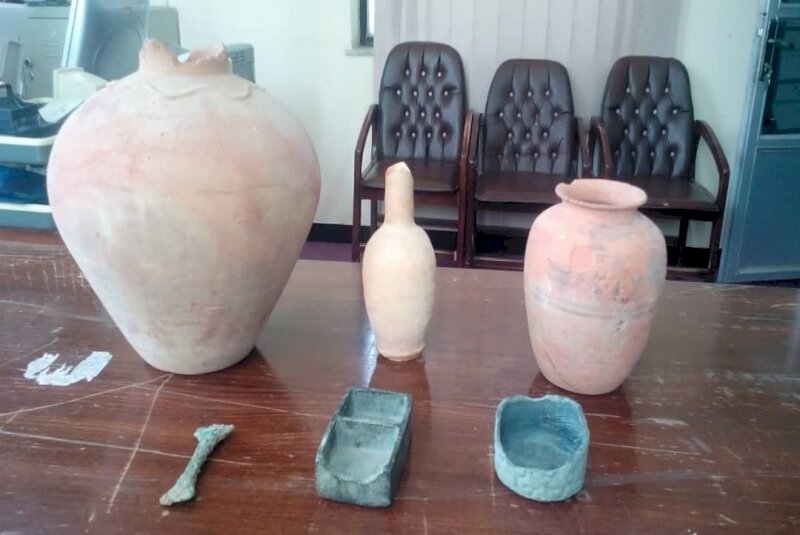Historical relics recovered from smugglers in Kerman

TEHRAN-A total of 35 historical objects have recently been confiscated from smugglers in Kerman province, a senior police official in charge of protecting cultural heritage has said.
Some of the objects, which have been discovered from the counties of Jiroft, Kahnouj, Qalehganj, and Rabor are still under investigation by cultural heritage experts and archeologists, CHTN quoted Seyyed Ali Hosseini as saying on Wednesday.
The objects, which are estimated to date back from pre-historic to historic eras, include clay utensils and metal objects, the official added.
Qalehganj (also spelled Qale Ganj) has so far yielded tens of prehistorical sites and relics including a variety of ancient hills, archaeological sites, cemeteries, subterranean aqueducts, shrines, lithographs, kilns, caravanserais, and castles, many of which so far been identified and documented.
Jiroft is one of the richest historical areas in the world, with ruins and artifacts dating back to the third millennium BC. Many Iranian and foreign experts see the findings in Jiroft as signs of a civilization as great as Sumer and ancient Mesopotamia.
Big and sprawling Kerman province is something of a cultural melting pot, blending various regional cultures over time. It is also home to rich tourist spots and historical sites including bazaars, mosques, caravanserais, and ruins of ancient urban areas.
Kerman province is bounded by the provinces of Fars on the west, Yazd on the north, South Khorasan on the northeast, Sistan-Baluchestan on the east, and Hormozgan on the south. It includes the southern part of the central Iranian desert, the Dasht-e Lut.
ABU/AFM
